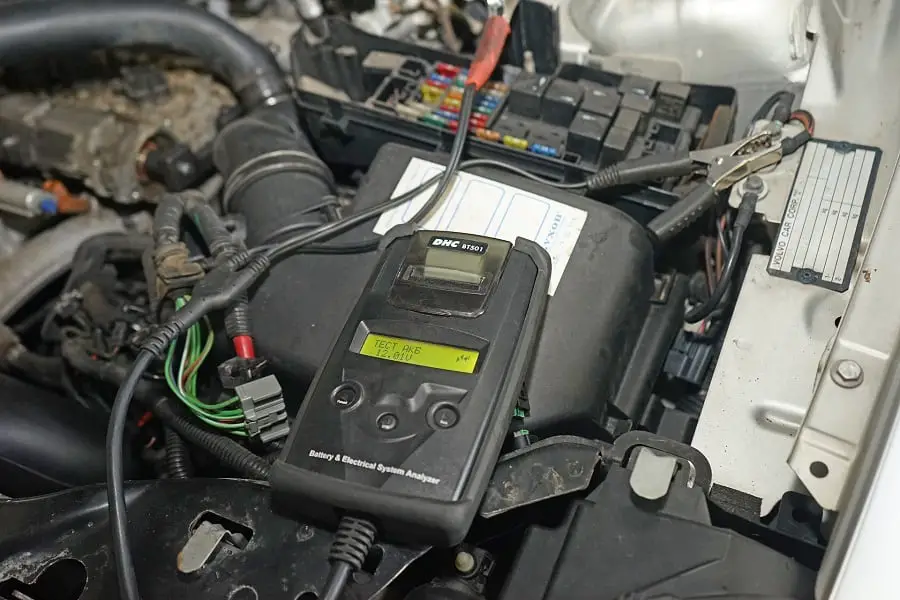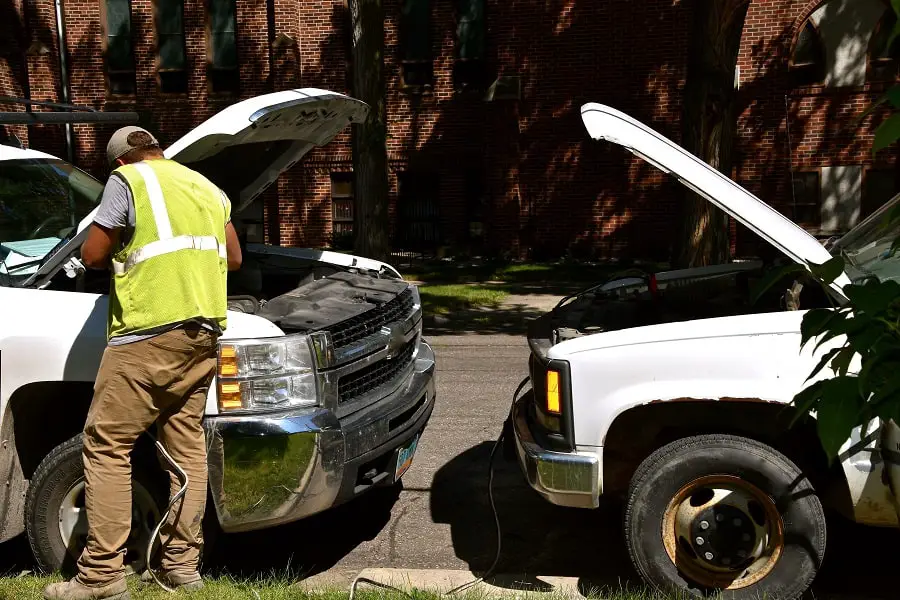
The relay is a component of an overland rig responsible for how electrical energy flows through the vehicle. It’s also accountable for how power generators and other features that produce electricity can be used when they need to.
The relay is made up of several different parts, and it can be confusing how each one works together to make the whole system work correctly.
Let’s Take a Look!
How Does the Relay Work on an Overland Rig?
When the engine is operating, the relay measures voltage and connects the batteries together. When you switch off the engine, it separates them so that the starting battery is not exhausted when you use the home battery to operate your accessories.
A current overland/expedition vehicle takes a lot of auxiliary power and a bit of forethought to have it set up appropriately. Several LED off-road lights, a compressor, a fridge/freezer, and all of the in-cabin electronics need to be powered, so auxiliary power is critical.
Making the Right Plan for Auxiliary Power
Overland/expedition should begin with the installation of an auxiliary power system. Plan out all of the extras you want in your dream overland/expedition car before you start building.
Determine how much electricity you will require daily on the path (how many lights will you need?).
Research the amp draw of each auxiliary component and begin to add it up to get a sense of your total system load and power requirements. The accessory’s wiring has to be mapped out to understand better the wire gauges needed to support it.
You’ll be able to figure out how many auxiliary devices you need to connect and support, as well as the total amp draw for each, so that you may safely and effectively wire up a system that meets your power requirements.
Your batteries should be directly linked to the circuit for your winches because of their significant drain. Our recommendation is to add a manual battery kill switch on that connection.
Power Control and Accessories Auxiliary Fuse Block
An auxiliary fuse block and a max-amp circuit breaker are two of the most prevalent methods for controlling and protecting circuits. If you’re looking for an additional fuse panel that can handle up to 125amps, several firms make such.
We recommend Blue Sea Systems’ fuse blocks and circuit breakers because they are long-lasting and simple to install. To ensure your electronics’ correct performance and safety and minimize the need to hunt and find stable ground, we propose using a negative bus in your setup.
Fuses
As near as possible to the accessory’s amp draw, each auxiliary connection should have a fuse that protects it. In the case of a 17-amp light bar, a 20-amp fuse is required.
Standard Blue Sea fuse blocks can handle no more than 30 amps per location. Consider using a higher-capacity circuit breaker if you need more amp protection.
Why Do You Need to Include a Circuit Breaker?
Safety. Period. Make sure you don’t end up blowing your entire system and risking a fire in the case of a system overload or short. Circuit breakers that are both below and slightly over the maximum amp load of your fuse block panel are always recommended by us.
For example, if your fuse panel can handle 125 amps of current, but you only aim to consume less than 90 amps at any moment, then a 90 amp circuit breaker is advised.
In the case of a short or overload in the system, this offers enough protection. Ideally, you want the circuit breaker to blow so you can figure out what the problem is and how to fix it.
Relay
The continual amp pull of most electrical accessories is too much for most accessory switches. Even LED lights with low amps. Most regulators can only tolerate three amps or less of current consumption, necessitating the installation of a relay.
Observe the switch’s extra amp load and the switch’s amp capacity before connecting a switch. To connect your controller to your accessory, you’ll almost always require a relay.
Fuse Block Custom Bracket
Overland enthusiasts utilize a variety of techniques to attach their fuse blocks. Depending on where they wish to reach the fuses, several people manufacture their fuse block brackets.
For fuse-block configurations, there are a few vendors who provide bespoke brackets. Search the internet for your vehicle’s make and model number. The fuse block brackets we create for Toyota 4Runners and FJ Cruisers may be found here.
sPOD
Fuse blocks are no longer necessary, thanks to new technology. You can control even more with the sPODs, which are little devices that protect up to 30 amps per connection!
Low voltage cut-off prevention ensures that your battery won’t be drained when you’re operating accessories without a solar connection or the car running.
Bluetooth communication is also available for smartphones. If you need more than 30 amps of additional auxiliary power, you’ll have to buy a separate power supply.
Does Your Overland Rig Need Dual Batteries?
At some point in your life, you’re sure to have encountered a dead battery. When your car’s engine is off, leaving the lights on will quickly deplete your battery.
Overlanders today are big on accouterments. Running a winch, air compressors, a fridge, or even adding USB ports to your vehicle’s electrical system can only take so much strain on your power supply.
You also rely on the battery to start the engine in addition to your other equipment. On a remote island, a dead battery is the last thing you want to encounter.

What’s the use of having two batteries?
A dead battery can spoil any trip, no matter how minor the distance is or how long the duration is.
When your automobile is operating, the alternator keeps the battery topped up. You may quickly drain your battery by using your fridge and camp lights in a stopped car while the motor is off. This might put you out of commission for a more extended period than you anticipated.
Adding a second battery to power your accessories and making sure your starting battery is fully charged before leaving home are two ways to avoid this.
How does it all work?
In a dual-battery arrangement, one battery (the starter battery) is solely responsible for starting the vehicle when the engine is off. The house or auxiliary battery, as it is sometimes referred to, powers all of your equipment.
Using the auxiliary battery to jump-start the starting battery is possible if necessary.
Diagram of a Dual Battery
Through a relay, the two batteries are connected in parallel (positive and negative). When the engine is operating, the relay measures voltage and connects the batteries.
When you switch off the engine, it separates them so that the starting battery is not exhausted when you use the home battery to operate your accessories.
When Using a Specific Type of Relay or Isolator, It Can Behave as Follows:
- If the auxiliary battery has electricity, it will continue to supply power to your vehicle’s accessories even if the engine is off.
- To guarantee that your starting battery has adequate capacity to start the engine, the isolator separates both the main and the starter batteries when the main battery dips below a particular voltage.
- Isolation permits the auxiliary battery to charge at 13.2 volts for around an hour after starting the vehicle’s engine.
- It will connect both batteries when they reach a specified voltage (e.g., 13.2 volts) so that both batteries may be charged.
- Some isolators contain built-in jumper wires that may be used to jump-start a dead starting battery from the auxiliary battery if the starter battery is exhausted.
How can I get one into my vehicle?
Finding out about dual-battery systems might be a bit of a challenge. There are a variety of ways to do this, as well as several components. All of these things are needed in addition to a second battery and the intelligent relay or isolator.
There are a variety of kits available for popular vehicles like Jeep Wrangler, Toyota 4Runner, or Toyota Tacoma. These kits are designed to be installed in a matter of minutes and come with all the wire and relay pre-cut.
If you prefer to build your own, it’s simple to do so. As long as you don’t mind the car being mounted, the concept is applicable.
Where can I get batteries?
A conventional automobile or deep cycle battery like an Odyssey or Optima can power a twin battery setup. You may be able to mix and match specific multiple battery setups.
A dual battery arrangement does not necessitate that you use two of the same batteries.
Different types of deep-cycle batteries are available from Optima. Its red top is marketed as the “ultimate starting battery” and has a powerful beginning burst. Cranking and cycling power for many accessories are strong points of yellow top batteries.
The blue top is ideal for areas that encounter high vibrations (such as boating) and lengthy periods of inactivity (such as a factory floor) (RVs).
Alternative Options
Generators like Jackery or Goal Zeros can power your fridge and charge your phones, computers, and lights without exhausting your car’s battery. They’re available online.
When you’re driving, you may use your car’s battery to power your fridge. When you get to basecamp, you may unhook your car’s fridge and use the generator to control it.

